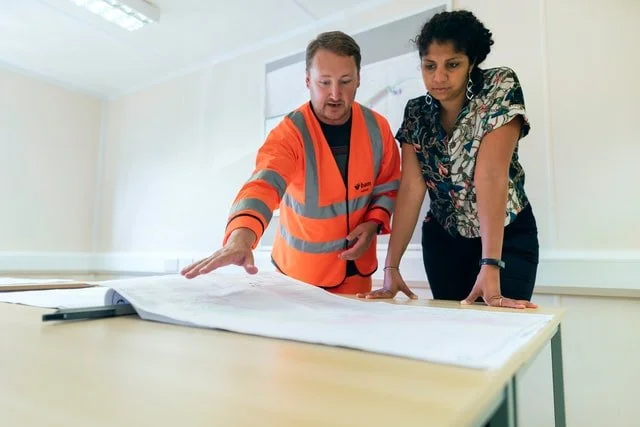Body language is incredibly important in many areas of work life, yes, even for project managers so we should understand how important it is in relation to all aspects of our working life. Here we look at the 8 different elements of body language.
Professional training courses for project managers teach you skills, and educate you on primary project management methodologies. However, courses cannot give you all the skills you need to be a good project manager. Some of the better PM courses might touch upon the importance of body language, but implementing this advice in the workplace is down to you and you alone.
Our body language and nonverbal communication forms part of no less than 8 different elements. And all of these elements form part of our communication with those around us. Communication is extremely important within project management and if you master excellent body language and master reading body language, you will find you are able to assess situations accurately, manage difficult situations effectively and present yourself in a confident and approachable manner.
Body language is powerful, and it should be considered a tool. By understanding the 8 key elements of body language you can give yourself an incredible base of knowledge that will enable you to communicate effectively in any situation.

The 8 key elements of body language
Facial Cues
The most obvious body language area, the face, is where we tend to instinctively and consciously look first for nonverbal cues. Eye contact (or lack of), grimacing, smiling and frowning, these are all expressions we recognise. And just as it is important to recognise how we speak and the words we say, it is important to recognise what our face is doing when we aren’t talking. For example; if you want a team member to feel understood and listened to while you try to resolve a dispute, you must maintain eye contact and actively look like you are listening, simply listening is not enough.
Your Eyes
This really is the first place anybody notices how you express yourself. Simply looking down when someone is speaking to you shows a lack of confidence, and staring continually can come across as confrontational and sometimes aggressive. So if you’re trying to land the perfect job interview and you’re explaining all the project management training courses you have done, all the experience you have and how passionate you are about the job role but you continually look down, you automatically play down all the amazing skills that make you suitable for the job role, because you look under confident.
The Way You Hold Yourself
This is all about your posture and how you hold yourself. Your body works as one big cue as to how you feel about yourself or the situation you are in. It can be as simple as scrunching your fists which shows tension and aggression, or pointing your feet inwards. If you address your team with your shoulders slumped and your arms folded you will appear closed and unengaged which will not motivate your team.

Gesturing
Gestures are things like waving or nodding, and also include gesticulation. Gestures can be used to emphasise a point in combination with the words you say, or they can be used alone and understood IE if you nod at someone it means you understand something. Gestures tend to be more of a conscious way of using body language but, acknowledging how they contribute to your overall non-verbal and verbal language is important.
The Way You Speak
Voice is verbal, but the way you speak forms part of your non-verbal communication. Your inflection, how loud you’re speaking, the way your voice sounds, all form part of your overall nonverbal communication.
The Way You Move
This could be the tiniest movement or the biggest movement, but every movement counts. So if a team member is discussing something important with you and you are slowly moving away, that can make them feel like they are not being listened to, like you are avoiding their communication with you.
Touch
The way you touch other people is exceptionally important, and there are four different elements of touch – friendly touch, professional touch, social touch and intimate touching. It is important you recognise that touch involves invading someone’s personal space, so you should always be careful how you use it. And touch can be extremely useful in the workplace. For example; if you are trying to let somebody know you understand how they feel, just a small tap on the arm when you say “I understand” can really reinforce your verbal communication.
The Way You Present Yourself
In corporate and business environments your appearance is extremely important. People do read a lot about someone from the way they look, this isn’t always right, but it’s simply what happens regardless of whether or not we are aware of it. So if you turn up to a presentation in creased clothes, with dishevelled hair and stubble (if you don’t normally have stubble) you may subconsciously be telling senior management that you aren’t professional and you aren’t up to the task. Again, it’s not necessarily fair, but it’s just the way we are as a society.
There are tons of variations within each aspect of body language, and understanding both conscious and unconscious body language is incredibly important within project management. It can make the difference between getting that promotion, or winning that important client, losing your team’s interest or gaining the respect you deserve.